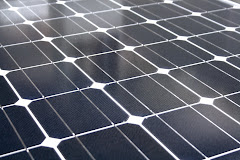 The sun's daily rise is a predictable thing. A Florida legislative session, not so much. Solar power advocates want the state to allow so-called feed-in tariffs of the sort just recently adopted by Gainesville's GRU. But debate over that issue has not been given its day in the sun. The tariff approach is controversial, but it presents appealing economic and environmental benefits that deserve exploration.
The sun's daily rise is a predictable thing. A Florida legislative session, not so much. Solar power advocates want the state to allow so-called feed-in tariffs of the sort just recently adopted by Gainesville's GRU. But debate over that issue has not been given its day in the sun. The tariff approach is controversial, but it presents appealing economic and environmental benefits that deserve exploration.Under feed-in tariffs, big electric companies are required to buy — at a higher than usual price, guaranteed through long-term contracts — the excess power produced by small-scale solar systems. Those could include your neighborhood grocery store's rooftop solar panels, for example, or an array on municipal land.
Such installations can be expensive. The guaranteed tariff payments, combined with government rebates, would help defray buyers' costs and encourage wider use of solar power. That serves the vital goal of reducing dependence on fossil fuels, which contribute to global warming.
Large utilities aren't enthusiastic about the tariff approach. They tend to prefer a more centralized strategy involving "renewable energy credits," purchased through competitive bidding from big solar "farms," not rooftop providers.
But credible research suggests that feed-in tariffs do more to broaden the use of clean energy, stabilize prices and create local job opportunities.
In Germany, where the feed-in tariff system has taken hold, "Germans pay 25 percent less per kilowatt hour for renewable energy and deploy seven times more renewable energy," a recent Environmental Defense Fund letter stated.
Lawmakers have a crowded agenda and limited time. But we hope they reserve some of it for an open, informative debate on solar feed-in tariffs. Proponents should get a chance to present their case before the sun sets on the annual legislative session.







No comments:
Post a Comment